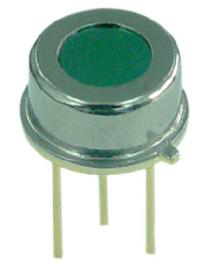 Combined sensor shipments this year may reach 123 million, or revenue of 186 million US dollars; in accordance with this trend of development, the market size of the combined sensor by 2015 up to 900 million US dollars.
Combined sensor shipments this year may reach 123 million, or revenue of 186 million US dollars; in accordance with this trend of development, the market size of the combined sensor by 2015 up to 900 million US dollars. This year's MEMS development momentum is mainly derived from consumer electronics, of which the smart phone is the primary "responsible". According to Yole report data, consumer electronics accounted for about 50% of the entire MEMS market revenue, followed by automotive electronics and medical electronics.
Market hot spots are concentrated on inertial sensors (accelerometers, gyroscopes, and magnetometers), pressure sensors, and MEMS microphones.
Accelerometers are an indispensable key component of consumer electronics for innovative applications. In recent years, from game consoles to smart phones, from notebooks to white goods, many consumer electronics products use high-accuracy MEMS accelerometers to implement motion control user interfaces and enhanced protection systems. Looking into the future, 3-axis accelerometers will be a direction for future development of consumer electronics products, and are expected to become the standard configuration in portable applications (currently the standard for smart phones). In 2011, the global accelerometer market was 566 million U.S. dollars and shipments were 1.093 billion.
Pressure sensors are also one of the hottest MEMS devices in the future, and automotive is the largest market for MEMS pressure sensors (about 74%). A high-end car will generally have hundreds of sensors, including about 10 pressure sensors. The pressure sensor applied in the tire pressure monitoring system is the best market prospect in the future. Currently, 99% of the pressure sensors used in TPMS are based on MEMS technology. In 2011, pressure sensors increased by 6% and revenue was US$1.3 billion. It is expected that the growth rate will reach double digits in recent years.
Compared with traditional electret condenser microphones, MEMS microphones have better performance in terms of volume, heat resistance, seismic resistance, and sensitivity, and have very good resistance to radio frequency and electromagnetic interference. The excellent product performance makes MEMS microphones popular with the market. Within a few years, MEMS microphones have achieved rapid growth, setting an impressive sales volume and becoming one of the brightest stars in MEMS devices. In 2011, the global consumer MEMS microphone market was 435 million U.S. dollars, and the shipment volume was 1.145 billion. It is expected that the market size will increase to 701 million U.S. dollars in 2015, and shipments will reach 2.389 billion.
In addition to the common microphones, inertial sensors and pressure sensors, the humidity sensor market is also very optimistic. In 2009, Sheng Sirui launched the SHT21, the world's smallest digital humidity sensor at that time, which attracted widespread market attention. The products are mainly used in security monitoring and energy conservation. If the humidity sensor is applied in the field of consumer electronics, the main selling point is the real-time monitoring of the environmental comfort, and the smart phone is the best carrier. Since the human body is less sensitive to air humidity, it needs to be monitored by sensors to remind people to supplement or reduce moisture at any time. Japan has been at the forefront of application development for humidity sensors. Sheng Rui's humidity sensor has been applied to a well-known brand of mobile phones in Japan. In China, manufacturers including Haier and Lenovo have also started some attempts to launch mobile phones that can display humidity for the rural market to help farmers easily understand climate change. The future can also be added to the elderly's handheld devices to remind them to add moisture and adjust the humidity in time.
This Napkin Fork is perfect for fast paced food, on the go meals, dinner party,wedding ceremonies, birthday parties, restaurants, hotels or snacks. Clean and hygienic for each set with individual packing and napkin. The disposable Fork set can be packed by customers' requirement as OPP bag with printing or without printing.

Plastic Fork,Plastic Napkin Fork,Compostable Forks, Plastic Cutlery,Fork Spoon
BILLION PLASTIC MANUFACTURING CO.,LTD, JIANGMEN , https://www.jmflatbag.com
